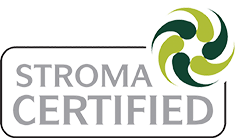Part L Compliancy
Part L of the building regulations (conservation of fuel and power) sets minimum requirements and targets for the construction and services within a building, to ensure that a minimum level of efficiency is achieved.
The regulations are split into 4 building Types:
- L1A New dwellings
- L1B Existing Dwellings
- L2A New Buildings other than Dwellings
- L2B Existing Buildings other than dwellings
Part L regulates almost everything that affects the Building Envelope and the mechanical and electrical services within it.
The main building elements and all the related factors, such as the insulation values of building elements, the area of windows and doors, the air permeability of the structure, the efficiency of the heating systems and the amount of efficient lighting are modelled within a software tool and compared against a calculated target to determine compliancy.
Parts L1A and L1B for domestic dwellings are modelled using the Governments ‘Standard Assessment Procedure’ (SAP) and assessed against targets to determine whether the Part L requirements have been achieved.
The SAP software models a ‘notional dwelling’ and calculates Target Emission Rate (TER). The actual SAP calculation, based on the specific dwelling information will then generate a Dwelling Emission Rate (DER).
Under Part L1A for newly constructed dwellings, the resultant Dwelling Emission Rate (DER) must meet the Target Emission Rate (TER) as well as other minimum requirements in order to demonstrate compliance with Part L1A.
The SAP calculation is also the base calculation which generates the EPC, please see our SAP and Part L Building Regulations Compliancy pages for further information.
Section L1B provides the guidance and requirements for work to existing dwellings, including extensions, change of use, material alterations, provision of a controlled fittings.
For this type of work there are elemental targets and minimum requirements, such as minimum U Values that must be achieved. For new extensions with large amounts of glazing that exceed the allowance, it must be demonstrated that the CO2 emissions from the dwelling with the extension, are no worse than the dwelling plus an extension with the allowed amount of glazing. This is demonstrated through SAP via the Whole Dwelling calculation method, any other improvements or upgrades to the existing dwelling must also comply with the required elemental L1B standards.
Parts L2A and L2B are similarly the regulatory requirements for buildings other than dwellings. Whereas domestic dwellings are assessed using SAP, non-domestic buildings are assessed using the Simplified Building Energy Model (SBEM).



